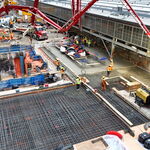allengeorge
Senior Member
@Northern Light https://www.statcan.gc.ca/en/hp/estima
Hat tip to the questioner and the response from Statcan here:
Hat tip to the questioner and the response from Statcan here:
@Northern Light https://www.statcan.gc.ca/en/hp/estima
Hat tip to the questioner and the response from Statcan here:
??The whole Etobicoke-Humber Waterfront area adding only ~400 people in those five years seems very low. I don't know how one of those tracts even has negative population growth.
Thinking about the population numbers in Toronto, I think we’re seeing a confluence of factors here:
1. Lower number of international students
2. Lower number of students in UofT, Ryerson, York, etc
3. Dramatically fewer hospitality workers (why stay in Toronto if it’s locked-down?)
4. Loss of secondary suites (I swear I saw a report recently that said that while Brampton had dramatically increased the number of secondary suites it had vs. a loss in Toronto)
5. Fewer office workers (if you can work remotely, no need to rent space in the city for an easier commute)
6. Continued outmigration as families space out of their current living conditions
I could easily imagine each of these factors contributing a few 10s of thousands and all adding up to the 200k drop.
One of my questions is whether the undercount (based on previous years) will actually apply this year given the unprecedented confluence of events.If you simply pro-rate that difference based on where numerical growth is being recorded, I think you see Toronto up by over 200,000
One of my questions is whether the undercount (based on previous years) will actually apply this year given the unprecedented confluence of events.
"$1.75 or $1.80 for regular gasoline in the Greater Toronto Area (GTA) would not be extraordinary," said Dan McTeague, the president of Canadians for Affordable Energy, who also runs the website Gaswizard.ca.
What I'm saying is that municipal boundaries are arbitrary - some cities spill over their political boundaries while others don't. The City of Vancouver for example is just the core of its urban area. Calgary's municipality is basically the entire urban area, and most of the City of Hamilton is farmland. Comparing the density of the three using municipal boundaries doesn't give any useful information.




